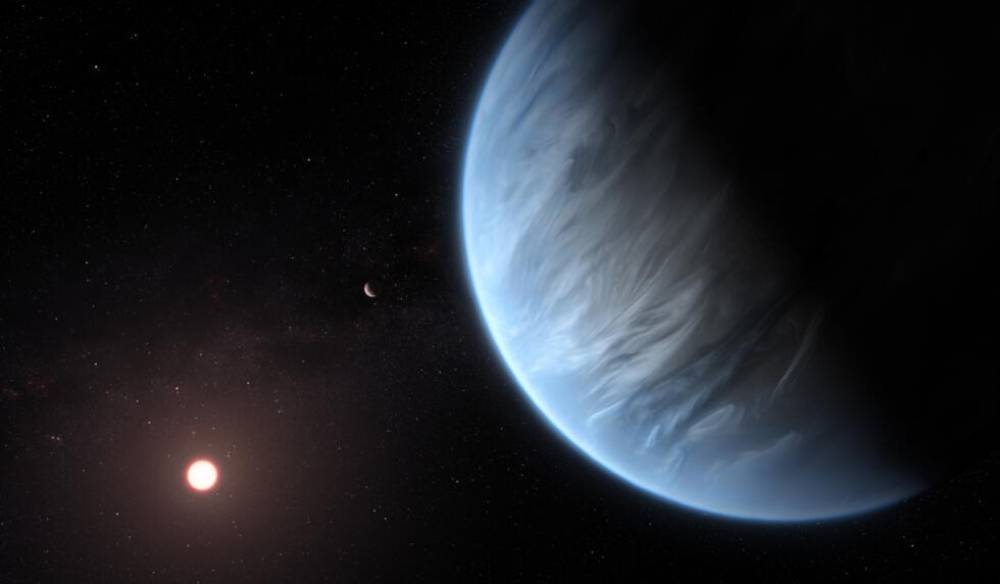
In what could be a groundbreaking moment for space exploration, astronomers have detected the most compelling signs yet of potential life on a planet beyond our solar system. A joint British-US research team using NASA’s James Webb Space Telescope (JWST) reported “promising hints” of biological activity on exoplanet K2-18b, located 124 light-years away in the Leo constellation.
The planet, categorized as a “Hycean world”—a rare type that may feature vast oceans beneath a hydrogen-rich atmosphere—has long intrigued scientists as a strong candidate for hosting alien life. K2-18b is over eight times the mass of Earth and 2.5 times its size, and orbits its red dwarf star within the so-called “Goldilocks zone”—a region where conditions may be just right for liquid water to exist.
Researchers observed the planet’s atmosphere when it passed in front of its star, allowing them to analyze the light filtering through. They detected traces of dimethyl sulfide (DMS) and dimethyl disulfide—chemicals that, on Earth, are produced almost exclusively by microscopic marine organisms like phytoplankton.
“These are only hints of possible biological activity, not a definitive discovery,” cautioned Dr. Nikku Madhusudhan, lead researcher from the University of Cambridge. “But this is the closest we’ve come to detecting a feature that could be directly attributed to life.”
While the discovery has excited the scientific community, many experts have urged restraint. Some argue that these molecules could have non-biological origins, or that conditions on K2-18b may be too extreme for life as we know it. For instance, Prof. Raymond Pierrehumbert from Oxford University believes the planet may be too hot and may instead be covered in molten lava, not water.
Still, the chemical concentration of DMS on K2-18b appears to be thousands of times higher than Earth levels, raising the possibility that the signals are biological in nature.
The findings, published in The Astrophysical Journal Letters, build on earlier Webb observations from 2023 that detected methane and carbon dioxide in the planet’s atmosphere—also considered potential biosignatures.
Though confirmation could take a few more years and up to 24 more hours of telescope time, scientists believe that we may be closer than ever to answering one of humanity’s oldest questions: Are we alone in the universe?
“This could be the tipping point,” said Dr. Madhusudhan. “We may be on the brink of proving that life exists beyond Earth.”